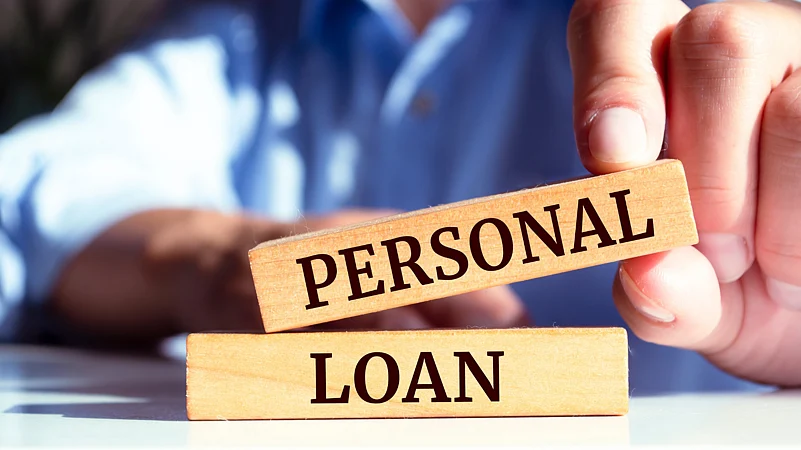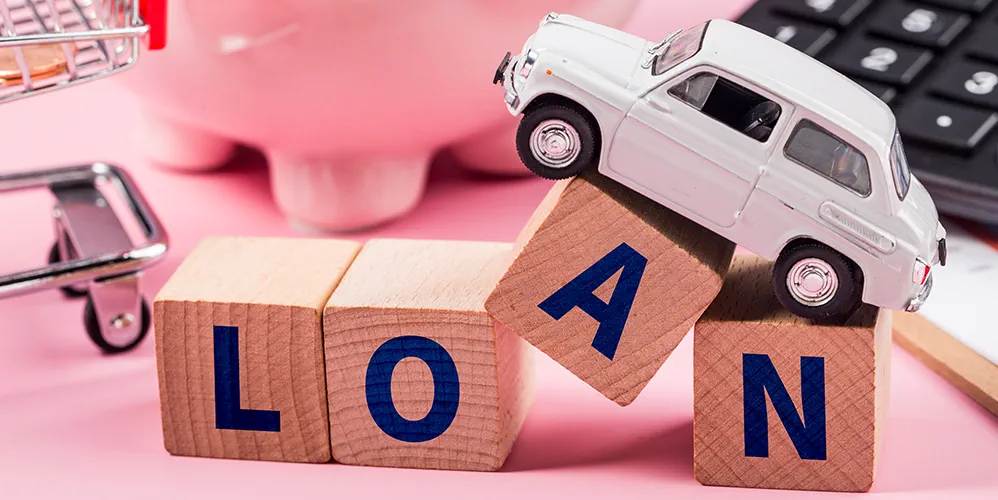Introduction to Leasing and Loans
In the landscape of personal and business finance, understanding the terms “lease” and “loan” is crucial for making informed financial decisions. Both options serve the common purpose of allowing individuals and entities to acquire assets, but they operate under different frameworks and conditions.
A lease is a contractual arrangement in which one party, the lessee, pays to use an asset owned by another party, the lessor, for a specified period. Typically associated with assets like vehicles and equipment, leasing provides a way for individuals and businesses to gain access to necessary resources without committing to a full purchase. The lessee is essentially renting the asset and often has the option to buy it at the end of the lease term. This method ensures that one can utilize the asset while preserving capital for other investments, making it a practical choice for many.
On the other hand, a loan involves borrowing a sum of money from a lender, which is then used to purchase an asset outright. In this case, the borrower agrees to repay the lender over time, typically with interest. Loans are frequently employed for significant investments, such as buying a home or a vehicle, where full ownership is preferred from the outset. The borrower gains both the benefits and responsibilities associated with the asset immediately, creating an ownership experience that leases do not provide.
Grasping what is the difference between a lease vs loan is fundamental in evaluating the most suitable financial mechanism for acquiring assets. Each option is designed to meet particular needs and circumstances. Factors like monthly budget, long-term plans, and the nature of the asset should be considered when choosing between leasing and loan arrangements.
Key Characteristics of a Lease
A lease is a contractual agreement that permits one party, the lessee, to use an asset owned by another party, the lessor, for a specified period in exchange for regular payments. One of the fundamental characteristics of a lease is its structure, which generally outlines the responsibilities and rights of both parties involved. This type of agreement allows individuals or businesses to utilize assets such as vehicles, equipment, or property without actually acquiring ownership. The implications of this are significant, especially for those who prefer flexibility and do not wish to commit to the costs involved in purchasing outright.
The duration of a lease is typically defined in the agreement, ranging from short-term arrangements lasting several months to long-term commitments that may span years. This allows for a diverse range of options based on the lessee’s needs. Payment terms are structured to specify how much and how often the lessee must pay. Monthly payments are common in lease agreements, making budgeting simpler for the user. Additionally, many leases incorporate a residual value, which is the estimated worth of the asset at the conclusion of the lease term. This aspect can influence the overall cost and sometimes provides a pathway for the lessee to purchase the asset at the end of the agreement.
Leasing can often offer tax advantages, as lease payments are frequently considered operating expenses, thereby potentially providing a more favorable financial impact than loans. Furthermore, since the asset is not owned, lessees can potentially upgrade to newer models or technology at the end of each lease term. Understanding these key characteristics of a lease is crucial when evaluating the options for asset utilization and financial planning, particularly when contrasting it with financing through loans in discussions focused on what is the difference between a lease and a loan.
Key Characteristics of a Loan
A loan is essentially a financial arrangement in which a borrower receives a specific amount of money, known as the principal, from a lending institution with the promise to repay it, along with interest, over a pre-defined period. This fundamental structure is what sets loans apart from leases, providing individuals and businesses with the necessary capital to acquire assets, such as vehicles, real estate, or equipment.
The principal amount is the initial sum of money borrowed. The borrower must be aware of not only this amount but also the additional financial implications, such as the interest accrued during the life of the loan. Interest rates can vary widely depending on several factors including creditworthiness, loan duration, and the lender’s policies. Typically, loans can have fixed or variable interest rates, leading to different financial effects throughout the loan term.
Repayment periods for loans typically range from a few months to several years, depending on the nature of the loan and the arrangement made with the lender. The borrower’s obligation is to repay the entire borrowed amount, including interest, which can result in a significant cumulative cost over time. Defaults on loans can lead to severe consequences, including damage to credit scores and potential legal action to recover funds.
Understanding these key characteristics is crucial when evaluating financing options. It is essential to grasp what makes a loan different from a lease, particularly regarding ownership and financial obligations. A lease, in contrast, allows for temporary use of an asset without transferring ownership, thereby creating a different set of expectations for both parties involved. Thus, one must carefully assess individual needs and circumstances when deciding between these two financing alternatives.
Ownership and Asset Equity
When exploring financing options, understanding the distinctions in ownership and asset equity between leasing and loans is essential. In the context of a lease, the lessee does not enjoy ownership of the asset. Instead, the leasing agreement allows the lessee to utilize the asset for a predetermined period while making regular payments. At the conclusion of the lease term, the asset is typically returned to the lessor, leaving the lessee without ownership rights or equity in the asset.
In stark contrast, obtaining a loan usually results in the borrower becoming the outright owner of the asset once the loan agreement is fulfilled. When an individual finances through a loan, they receive funds from the lender to purchase the asset outright. As the borrower makes monthly payments toward the loan, they gradually build equity in the asset. This equity represents the portion of ownership that the borrower holds, which can grow over time as they continue to make payments until the loan is fully satisfied.
The ability to build equity is a significant advantage of loans over leases. With loans, borrowers have an opportunity for potential asset appreciation, contributing to their overall net worth. Furthermore, ownership comes with additional responsibilities, including maintenance and insurance, which must be considered by the borrower. On the other hand, leasing often entails lower monthly payments and less responsibility regarding the asset’s upkeep, as these obligations typically fall to the lessor.
Thus, while both leasing and loans serve as viable financing methods, the core difference lies in ownership and equity. Leasing provides temporary use without ownership implications, whereas a loan grants full ownership and the opportunity to build asset equity. Understanding these differences is crucial when deciding which financial option aligns best with one’s personal or business objectives.
Financial Implications of Leasing vs. Loans
When evaluating what is the difference between a lease and a loan, one of the most critical aspects to consider is their financial implications. Leasing typically involves lower initial costs compared to loans. For instance, when leasing a vehicle, the upfront payment is usually significantly reduced, making it accessible for various budgets. Conversely, a loan requires a larger down payment and commitment to monthly payments that include interest and principal repayment. As a result, individuals entering into a lease may find it easier on their cash flow initially.
Tax implications also play a vital role in understanding the financial differences. In many cases, leased items are treated favorably under tax laws—particularly for businesses. Lease payments can often be deducted as business expenses, providing immediate tax benefits. On the other hand, loan repayments do not generally allow for such deductions since they are tied to the asset’s acquisition rather than ongoing operational expenses.
Moreover, maintenance responsibilities differ between leasing and loaning arrangements. Leasing agreements frequently include maintenance and repairs as part of the contract, alleviating the financial burden on the lessee. This can be especially advantageous in long-term commitments, as it minimizes unexpected costs associated with vehicle upkeep or equipment maintenance. In contrast, loan holders are typically responsible for all maintenance of the asset, which can lead to additional, sometimes unanticipated expenditures over time.
Finally, when assessing overall cost considerations, potential lessees should understand that while leasing might suggest lower payments, the long-term salary can vary widely based on use limits and penalties. In contrast, loans often result in ownership, leading to potential equity as the asset depreciates. Thus, understanding what is the difference between a lease vs loan goes beyond mere payments; it encompasses a wider financial context, including tax implications, maintenance responsibilities, and long-term cost factors.
Flexibility and Commitment
The choice between leasing and taking out a loan often hinges on the flexibility and commitment required by each option. Leases, by their nature, provide a level of adaptability that is particularly attractive to businesses and individuals who may need to upgrade or change their assets frequently. For instance, when leasing a vehicle, a lessee can usually select a term that may range from just a few months to several years. This flexibility allows lessees to keep up with the latest models and technology without the long-term burden of ownership. By the end of the leasing period, individuals can choose to return the asset, upgrade to a newer model, or sometimes even purchase the asset if desired, accommodating the changing needs of the lessee seamlessly.
On the other hand, loans typically demand a stronger commitment. When one takes out a loan to purchase an asset, the borrower is often tethered to that specific asset for the duration of the loan term, which can last several years. This long-term obligation can limit the borrower’s ability to adapt to new circumstances or take advantage of newer, more efficient technologies. For example, a business that finances heavy machinery through a loan may find itself limited by the specifications and capabilities of that machinery while still making monthly payments. Unlike leasing, securing a loan usually implies that ownership is derived, meaning the asset belongs to the borrower—and should an upgrade be necessary, the borrower may face the difficulty of needing to sell or trade in the asset amidst their financial commitments.
Ultimately, the decision between leasing and loaning hinges on whether flexibility or commitment aligns more closely with one’s financial strategy and asset management goals. Each option presents distinct advantages and disadvantages, informing the trajectory of personal and organizational growth.
Situations Best Suited for Leasing
Leasing offers distinct advantages in various situations, particularly for individuals and businesses seeking flexibility and cost-effectiveness. One such scenario where leasing is favored is in the acquisition of technology and equipment. In many industries, rapid advancements lead to frequent upgrades. For companies that rely on cutting-edge technology, leasing allows them to access the latest equipment without the long-term commitment associated with purchasing. As a result, businesses can stay competitive without incurring the high costs of owning depreciating assets.
Moreover, leasing typically involves lower upfront costs compared to traditional loans. This characteristic makes leasing particularly attractive for startups or small businesses with limited capital. By opting for a lease, these entities can allocate their resources more effectively, investing funds into other critical areas such as marketing, staffing, or product development. The reduced initial financial burden allows for more strategic financial planning, often essential for early-stage enterprises aiming for growth.
Additionally, leasing minimizes the long-term financial commitment that comes with a loan. Loans usually entail fixed payments over an extended period, but leases often come with shorter terms, providing a sense of financial flexibility. For businesses in industries subject to change or uncertainty, this reduced commitment can be crucial. It allows them to adjust operations without the lingering obligation of a purchased asset, thereby managing their financial risk more effectively.
In situations where frequent upgrades, lower upfront costs, and a desire to minimize long-term financial commitments are present, leasing emerges as a viable alternative. Understanding what is the difference between a lease vs loan can empower individuals and businesses to make informed decisions based on their unique circumstances and objectives.
Situations Best Suited for Loans
When considering the options of leasing versus borrowing, understanding what is the difference between a lease vs loan is crucial, particularly in identifying scenarios where loans prove to be the most beneficial choice. Loans are especially advantageous for individuals and businesses looking to acquire assets that they intend to keep over an extended period or that are likely to appreciate in value. Examples of such assets include real estate, vehicles, and equipment.
Acquiring real estate through a mortgage loan, for instance, allows the borrower to own property that typically appreciates over time. Owning property not only provides the potential for growth in value but also enables the homeowner to build equity. This equity could be leveraged in the future for additional loans or other investment opportunities. Similarly, purchasing a vehicle via a loan may be more sensible than leasing for those who plan to keep the car long-term. When a loan is paid off, the owner has an asset that can provide value beyond its initial purchase price.
Additionally, business owners may find loans beneficial for acquiring essential equipment or machinery that is critical to their operations. Instead of paying ongoing lease payments, which may offer no return on investment, a one-time loan allows the business to invest in assets that will assist in increasing productivity and profitability. Over time, as the asset becomes fully paid off, it contributes to lower operating costs and greater financial stability.
In these scenarios, choosing a loan versus a lease can lead to ownership, equity accumulation, and long-term financial benefits, underscoring the importance of understanding what is the difference between a lease vs loan. Ultimately, loans serve as a pathway to asset ownership, making them a preferred option in circumstances where long-term investment is advantageous.
Conclusion: Making an Informed Choice
When it comes to acquiring assets, individuals and businesses often face the decision of whether to lease or obtain a loan. Understanding what is the difference between a lease vs loan is crucial for making a choice that aligns with personal financial situations and goals. Each option carries distinct implications for ownership, costs, and flexibility.
A lease typically entails renting an asset for a specified period, allowing users to enjoy the benefits of the asset without assuming full ownership. This arrangement can be advantageous for those who prefer lower initial payments and flexibility, especially businesses that need to preserve capital or require equipment that may become obsolete. Meanwhile, loans generally lead to ownership, requiring regular repayments plus interest over time. This route often suits individuals or businesses looking to build equity and maintain long-term usage of an asset.
In evaluating whether to lease vs loan, one should consider their financial goals, cash flow capabilities, and the specific asset in question. For instance, individuals needing a vehicle for a short duration may find leasing more beneficial, while those looking for long-term asset ownership might lean toward a loan. Additionally, tax implications, maintenance responsibilities, and the total cost of each option are important factors in this decision-making process.
Ultimately, each scenario is unique, and the decision should reflect careful thought about how leasing or using a loan can serve one’s financial objectives and asset management strategies. By weighing the advantages and disadvantages of each, one can make a well-informed choice that meets their needs. Understanding what is the difference between a lease vs loan is the first step toward making the best decision for your financial future.




